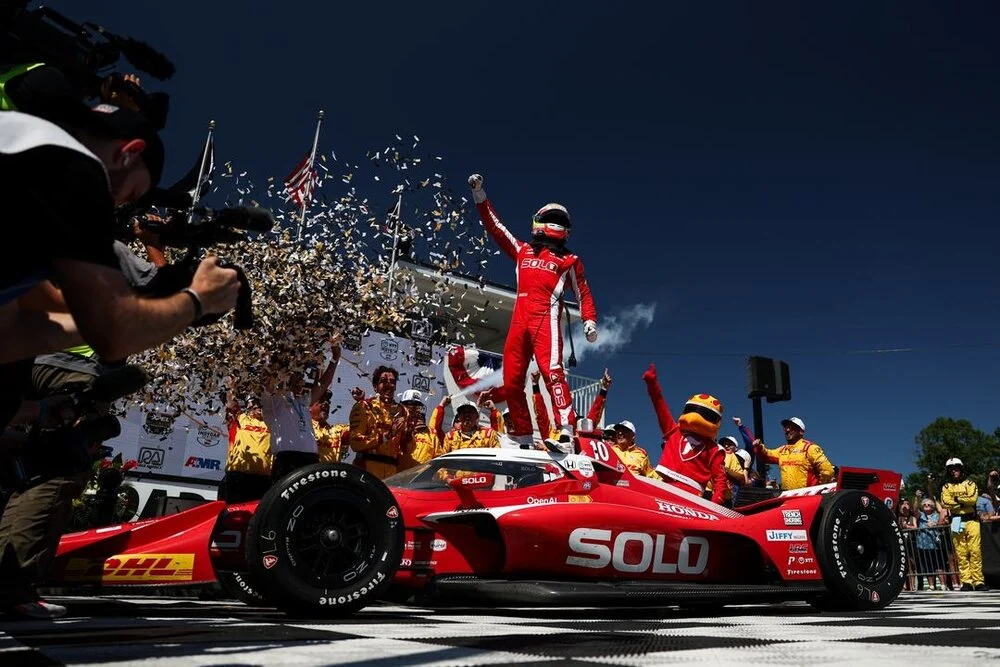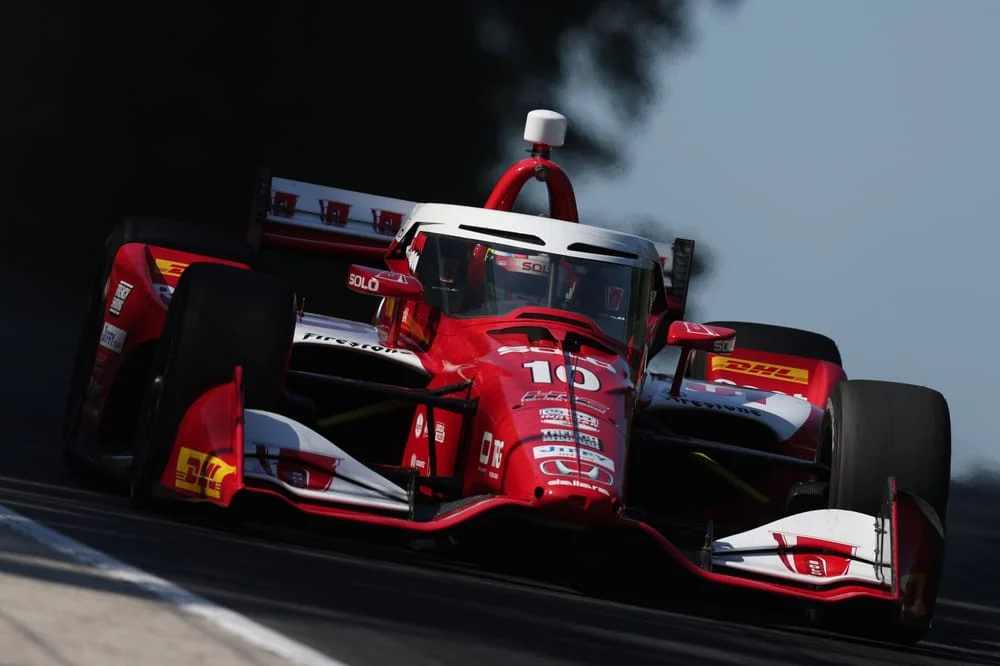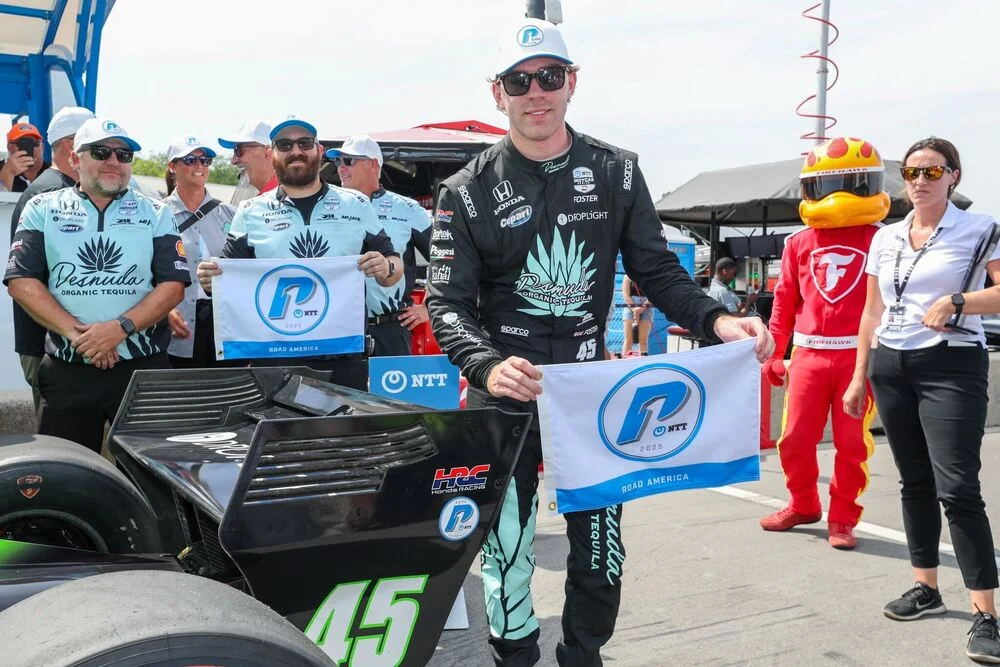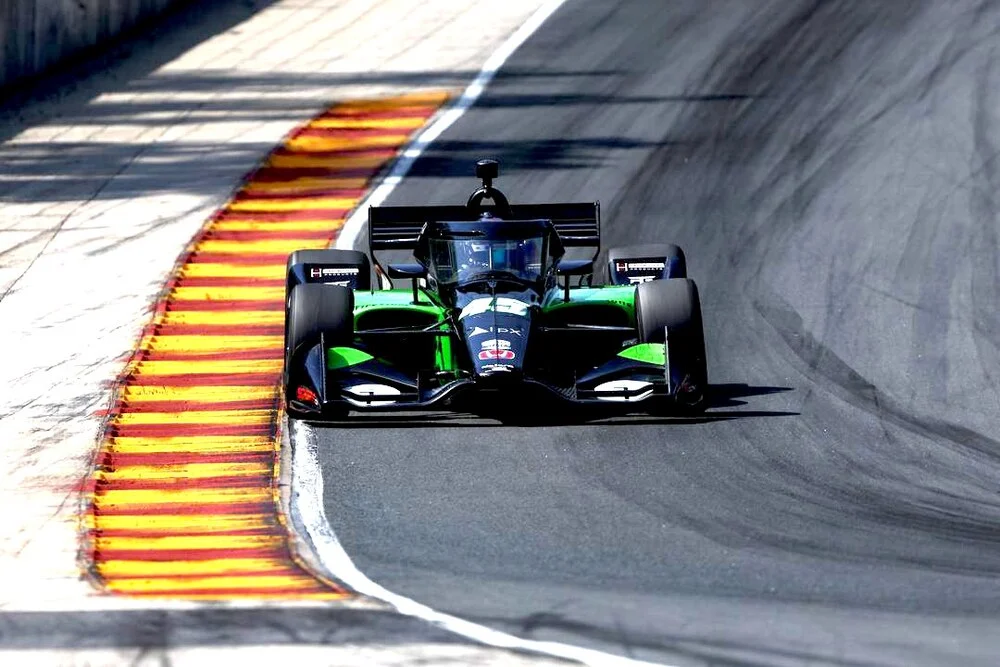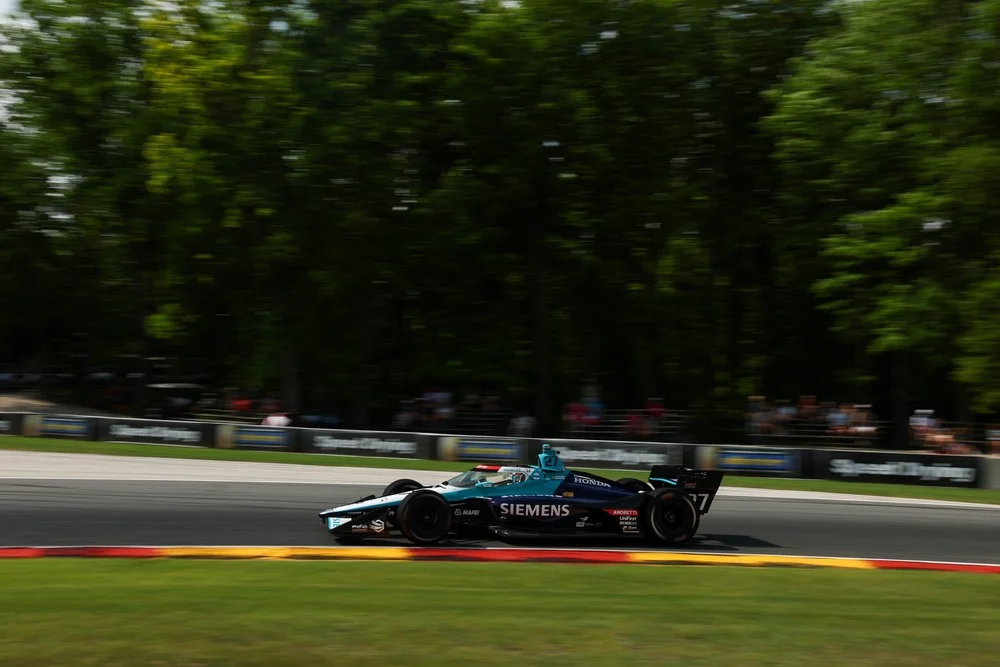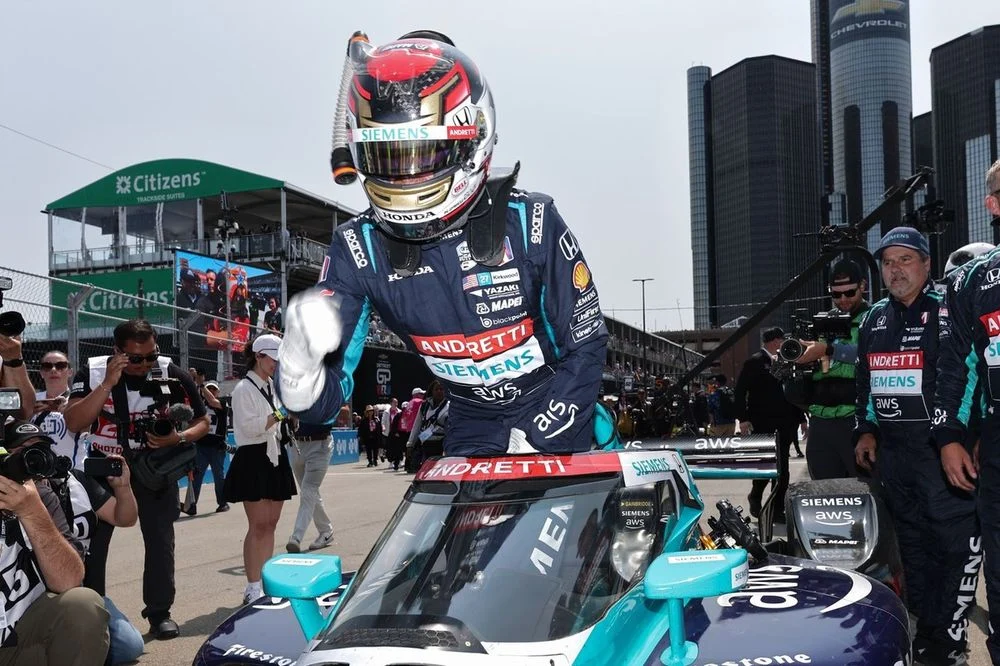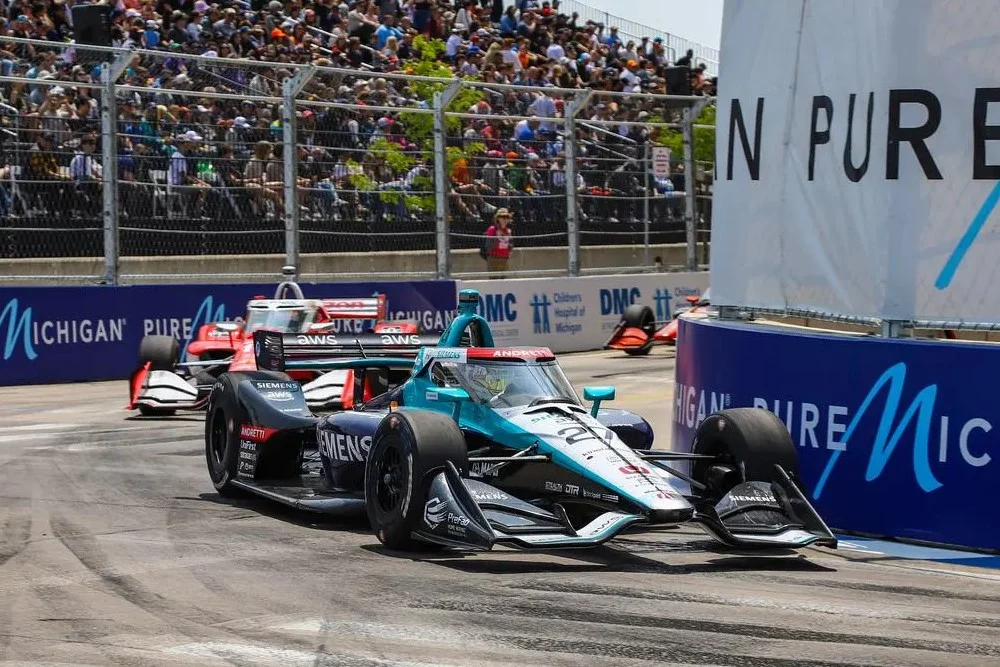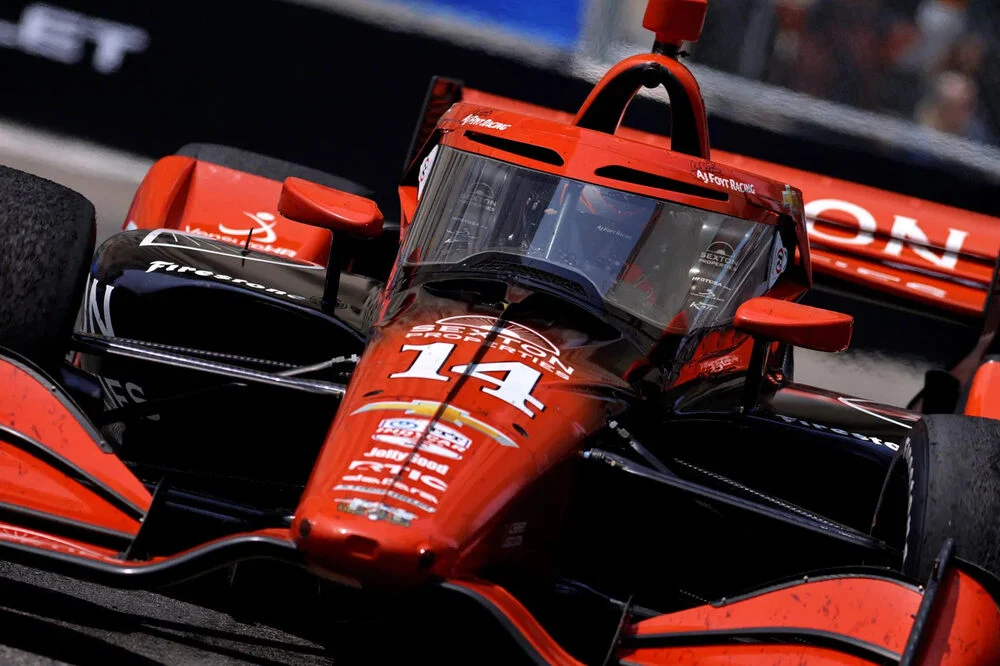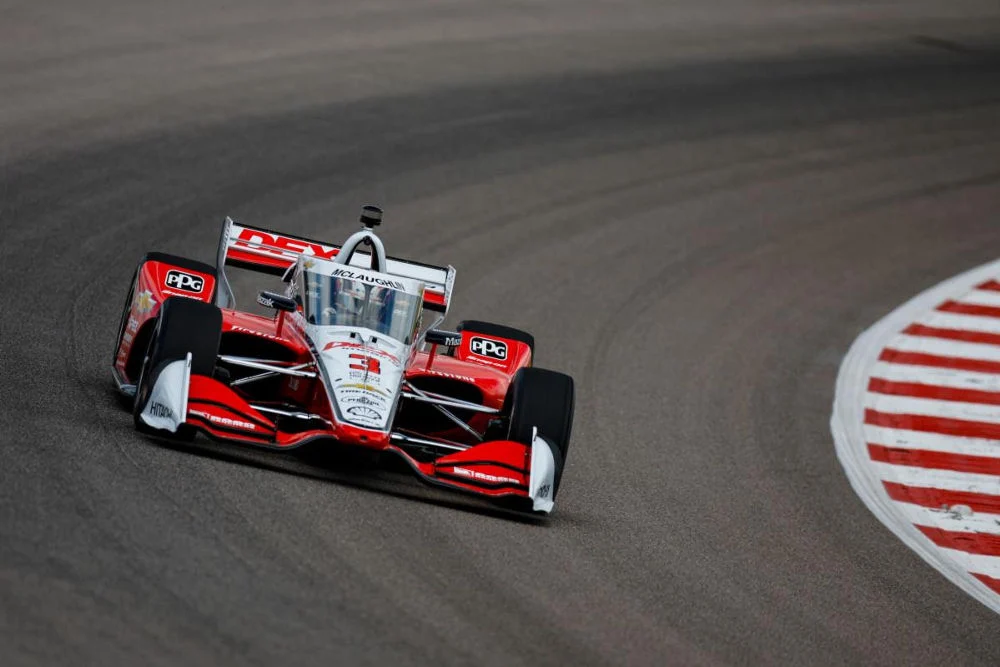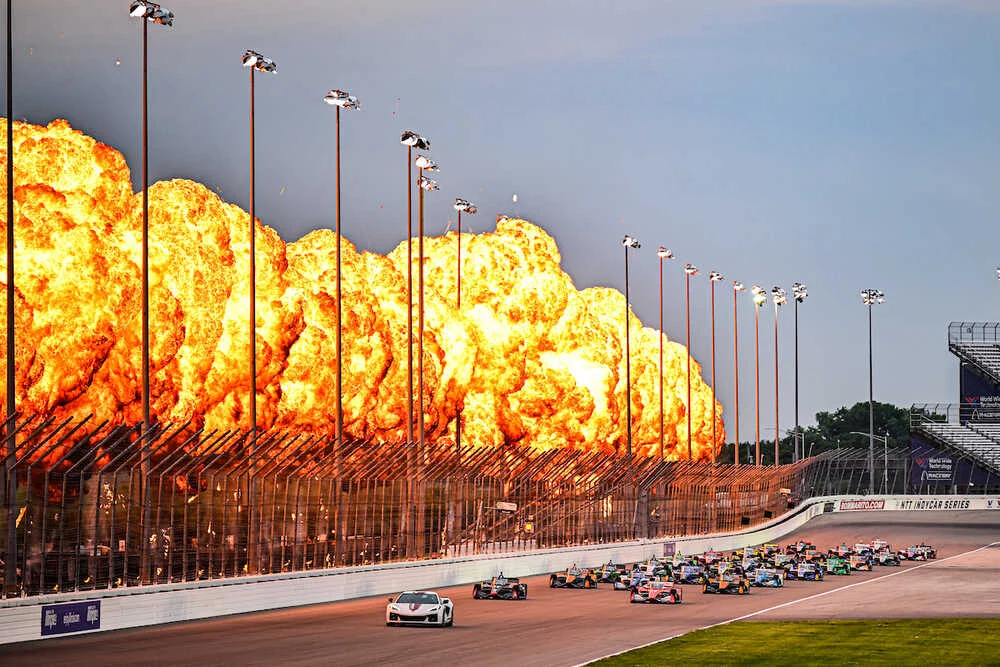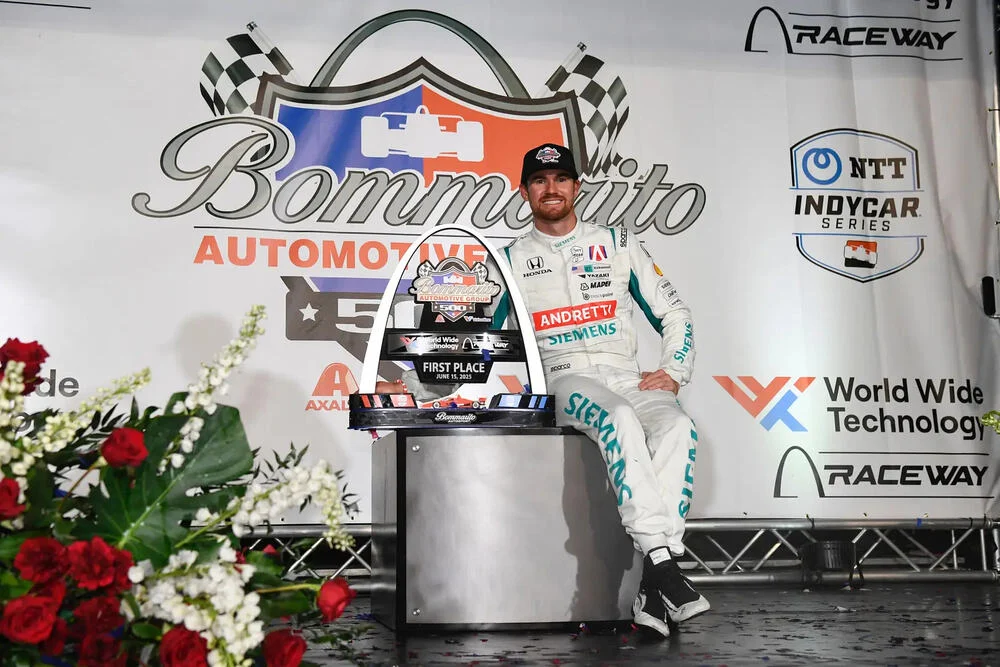Josef Newgarden put Team Penske on top of the timesheets in Thursday’s Indy 500 practice day 3 which unfolded under warm conditions, giving IndyCar drivers more track time ahead of Fast Friday.
As the third official day of practice, the session held at Indianapolis Motor Speedway was marked by a palpable sense of pressure among the 34 drivers and their teams all vying to fine-tune their setups and strategies ahead of the iconic race.
The day was unmarred by weather interruptions allowing for a full six hours of uninterrupted track time, a first for this week, giving teams the crucial opportunity to maximize their data collection and race simulations.
From the outset, the atmosphere on pit lane and out on the 2.5-mile oval was distinctly more frenetic than previous days. Drivers pushed the limits of their machines and their own comfort zones with tempers occasionally flaring and on-track action remaining relentless.
The increased urgency was in part due to the looming “Fast Friday” when teams would switch focus to outright qualifying speed with an extra 100 horsepower available from the turbocharger, making Thursday the last major opportunity to perfect race setups before the focus shifted to qualifying trim.
Josef Newgarden set the Indy 500 practice day 3 benchmark, topping the time charts for Team Penske with a best lap of 226.632 mph. While his speed was slightly down from the fastest laps earlier in the week, it was still enough to establish Penske and Newgarden as the team to beat.
Newgarden’s confidence in his car was evident; he completed only 35 laps before calling it a day with 45 minutes still left in the session, satisfied with the performance and the data collected.
His pace was not just limited to laps benefiting from the aerodynamic tow; he also led the non-tow speed charts, clocking a best non-tow lap of 222.555 mph overtaking Kyle Kirkwood who had led that category for the previous two days.
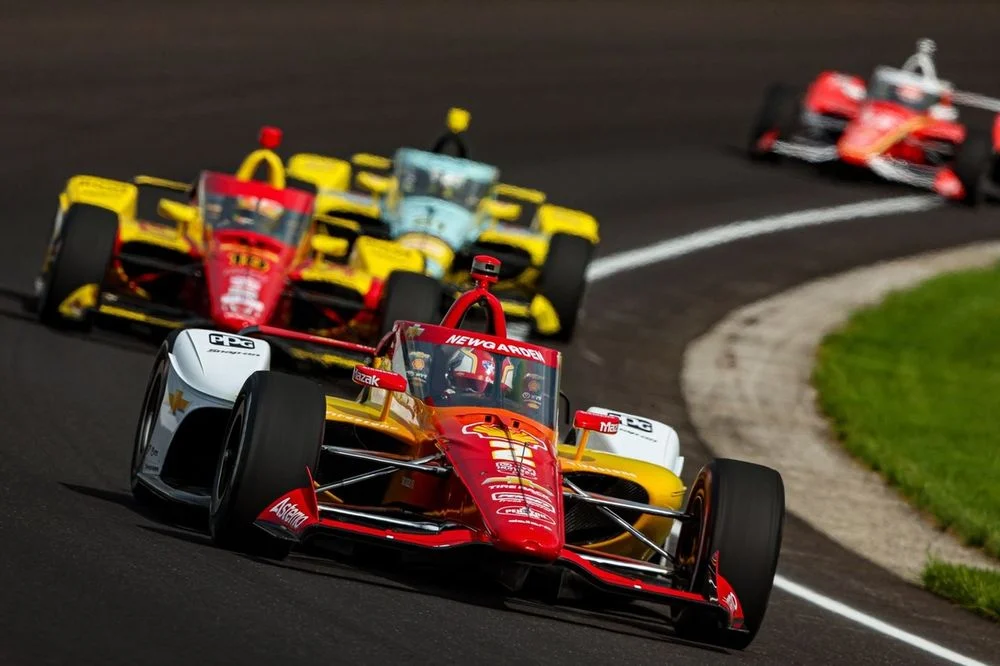
Meanwhile, Chip Ganassi Racing’s Scott Dixon continued to demonstrate his prowess at Indianapolis, finishing second fastest at 225.457 mph. Conor Daly delivered an impressive showing for Juncos Hollinger Racing to secure third on the speed charts at 224.893 mph.
Arrow McLaren’s Pato O’Ward broke into the top five for the first time this week, finishing fourth fastest while Ryan Hunter-Reay rounded out the top five. Alex Palou, Colton Herta, Christian Rasmussen, David Malukas and Scott McLaughlin completed the top ten.
NASCAR Cup Series championship leader Kyle Larson continued his acclimatization to the unique demands of IndyCar racing.
On Thursday, Larson completed 63 laps bringing his total for the week to 215. He delivered a 222.222 mph in Indy 500 practice day 3, placing him 17th among the 34 drivers.
However, Larson’s day was not without incident; he narrowly avoided a spinning Christian Rasmussen who lost control in Turn 2, brushing the wall with his right rear before spinning down the track.
Fortunately, the damage was minimal and the No. 21 Ed Carpenter Racing Chevy was able to make a return to the track before the session ended. Rasmussen attributed the incident to a combination of worn tires and possibly pushing too hard late in the stint.
MORE INDYCAR:
Indy 500 practice day 2: Alex Palou fastest as unpredictable weather takes centrestage
Will Power tops opening Indy 500 practice in Team Penske 1-2
Not all drivers found the sweet spot with their cars. Graham Rahal was audibly frustrated over team radio, expressing discomfort with his car after only a few laps on new tires.
Despite efforts to improve the balance, Rahal struggled to find a setup that inspired confidence – a concern that will need to be addressed before qualifying. Santino Ferrucci also struggled to dial in his AJ Foyt entry despite making significant overnight changes.
The session was characterized by challenging conditions. Warm temperatures made the track surface slick reducing overall grip and slowing lap times compared to earlier in the week.
Additionally, strong winds particularly a tailwind into Turn 3 added another layer of complexity for drivers, affecting car balance and requiring constant adjustments.


